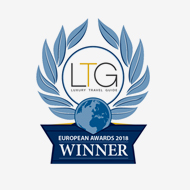As participation in sports becomes more popular at all ages, and performances improve from year to year, more is demanded of the athlete. This can mean that performances which were seen as outstanding twenty years ago are now commonplace.
Mentally and physically, psychologically and emotionally, athletes are pushing themselves to deliver more and more, and they are looking for innovative and effective ways to improve their performances.
Regular sports massage is part of the training programme of all top sports people and its increased availability in clinics and health centres is now making it accessible for everyone.
What happens during a sports massage treatment?
A sports massage therapist will usually take a medical history to ascertain relevant information about your health past and present, about your sport in particular and about any injuries you may have incurred. Each treatment will be unique to you, the patient, your sport, your state of fitness or injury and your athletic goals.
Throughout the sessions a number of adapted tests for strength, suppleness and pain-free range of movement will be undertaken.
Treatment should be mainly ‘hands on’ using a combination of massage and exercises to strengthen and release soft tissue (muscles, fascia and tendons) and to increase range of movement in joints. Only rarely will machinery or infra- red be required.
Massage techniques used may include trigger point therapy, neuromuscular therapy, soft tissue release, acupressure and more. Remedial massage may be appropriate to treat injuries. You will feel energized and ready for action.
Pre – event massage
Sports massage is an effective way of preparing for events and caring for the athletes after the event. Effects can be psychological as well as physical. Pre-event massage is used to warm and loosen up the muscular system, and sharpen neuromuscular communication ready for action. It is also seen as a vital part of the routine psychological preparation.
Post – event massage
After the event,massage is a popular adjunct to the warming down exercise routine and can in some cases, where a warm down is not possible, replace this altogether. It has the effect of loosening and releasing muscles and increasing localised vascular and lymphatic activity to speed the removal of byproducts of athletic activity, e.g. hydrogen ions (sometimes known as ‘lactic acid’) and the waste products from increased cell metabolism.
Sports Massage after a challenging training session or after an event or a match can help to eliminate subsequent muscle soreness, particularly if administered 2 to 6 hours after the event. Psychologically it acts as a ‘closure’ to the event and gives the athlete valuable time to reflect. After a post – event sports massage you will feel physically and mentally relaxed.








